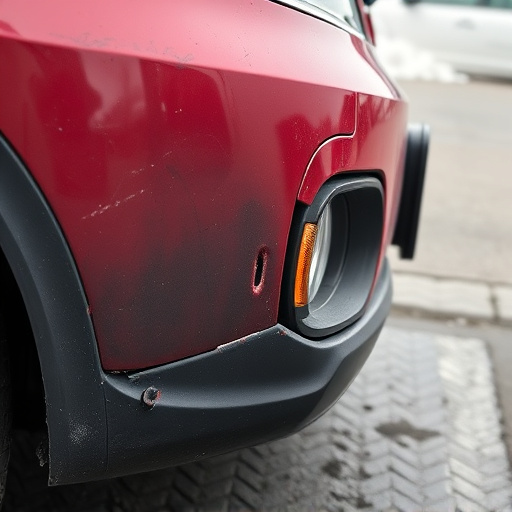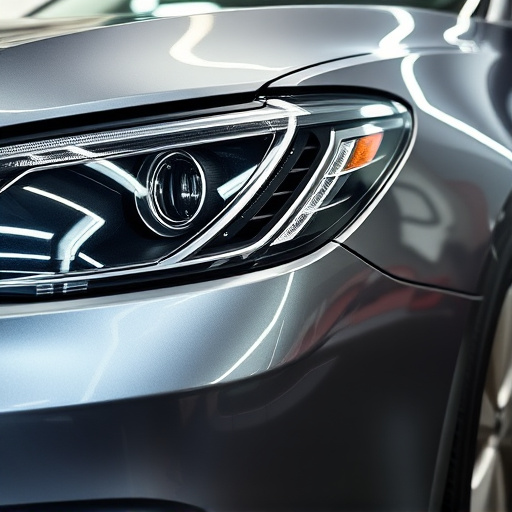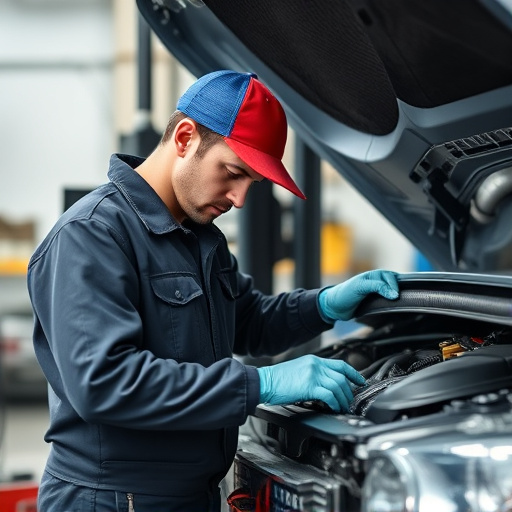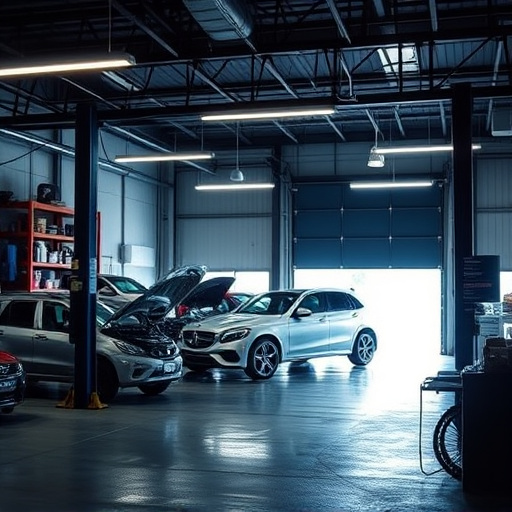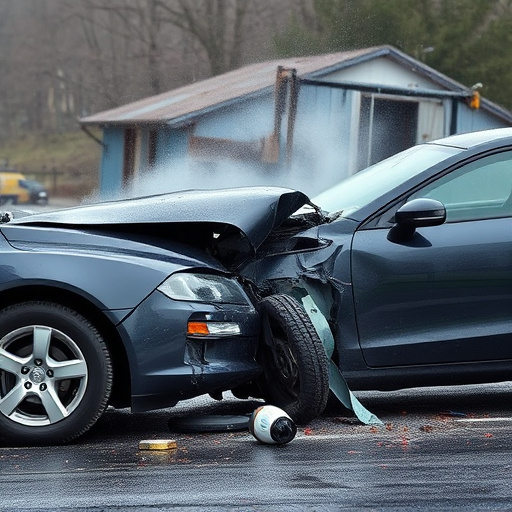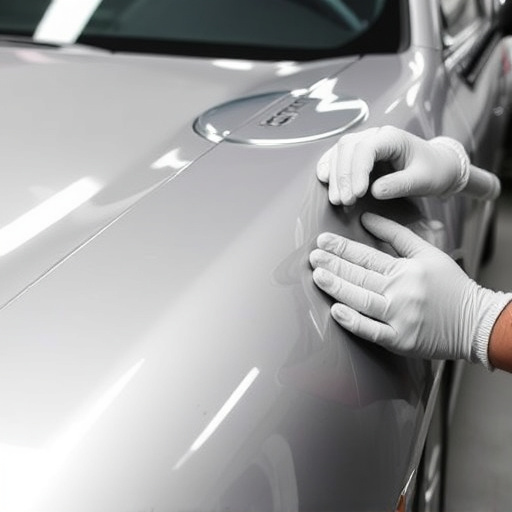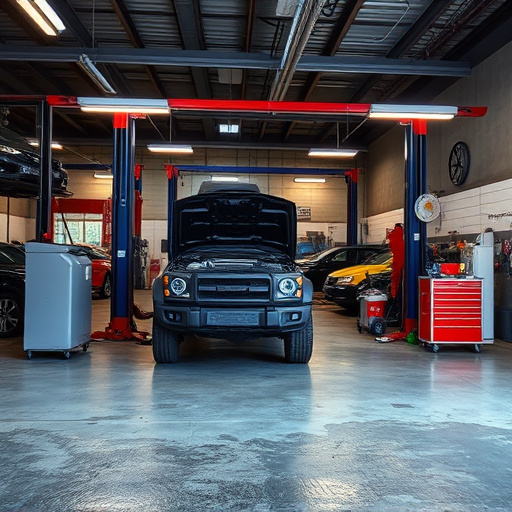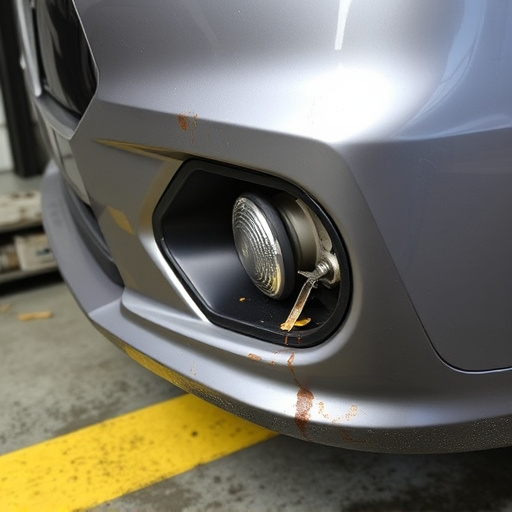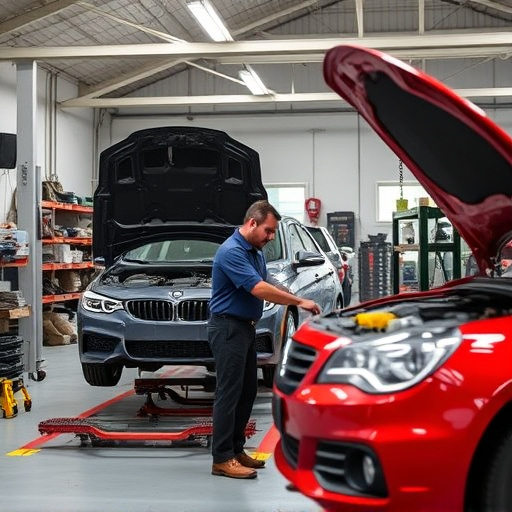Tesla's use of aluminum in vehicle construction offers advantages like improved corrosion resistance and fuel efficiency, but presents challenges for body repair shops due to aluminum's heat-sensitive deformability. Specialized tools and techniques, such as controlled heating and CAD expertise, are required for precise repairs that preserve structural integrity and aesthetic appeal. Innovative methods like paintless dent repair (PDR) and robotic welding systems enhance Tesla aluminum body repair, ensuring factory-like quality while meeting high owner standards.
In the realm of automotive repair, Tesla’s adoption of aluminum bodies presents unique challenges. This article delves into the top hurdles faced by technicians in Tesla aluminum body repair work. From understanding the carmaker’s innovative design to tackling common panel replacement issues, we explore strategies for successful repairs. Discover advanced techniques that ensure seamless integration and longevity for Tesla vehicles, catering to both professionals and enthusiasts interested in mastering this specialized craft.
- Understanding Tesla Aluminum Body Unique Properties
- Common Challenges in Aluminum Panel Replacement
- Advanced Techniques for Seamless Tesla Body Repair
Understanding Tesla Aluminum Body Unique Properties
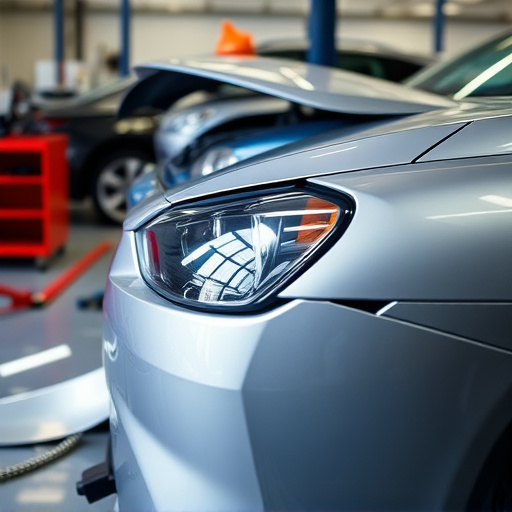
Tesla’s use of aluminum in its vehicle construction brings both advantages and unique challenges for body repair work. Aluminum is a lightweight metal with excellent corrosion resistance, making it an ideal choice for electric vehicle manufacturing. Its strength-to-weight ratio offers improved fuel efficiency and enhanced handling dynamics. However, this material presents distinct considerations for repair shops when compared to more conventional metals like steel.
Aluminum has a tendency to deform and expand under heat, unlike steel which remains relatively rigid. This characteristic requires specialized techniques and equipment during the repair process, such as controlled heating and specific tools tailored for aluminum body panels. Car dent removal and auto glass replacement processes may also need adjustments due to its unique properties, ensuring that any repairs are done accurately and without compromising structural integrity.
Common Challenges in Aluminum Panel Replacement

Aluminum panel replacement in Tesla vehicles presents a unique set of challenges compared to traditional steel body structures. One of the primary difficulties lies in achieving precise alignment and fit due to the inherent flexibility and expansion characteristics of aluminum. Even minor temperature fluctuations can cause panels to bend or misalign, making perfect installation more demanding. This precision is crucial for maintaining the vehicle’s structural integrity and aesthetic appeal.
Moreover, Tesla’s use of advanced manufacturing techniques results in intricate panel designs with complex contours and shapes. Replacing these panels requires specialized tools, expertise in computer-aided design (CAD), and a deep understanding of the vehicle’s architecture. Missteps can lead to visible gaps, misaligned edges, or even damage to surrounding components, necessitating not just skilled labor but also advanced equipment typically found in top-tier collision repair services.
Advanced Techniques for Seamless Tesla Body Repair
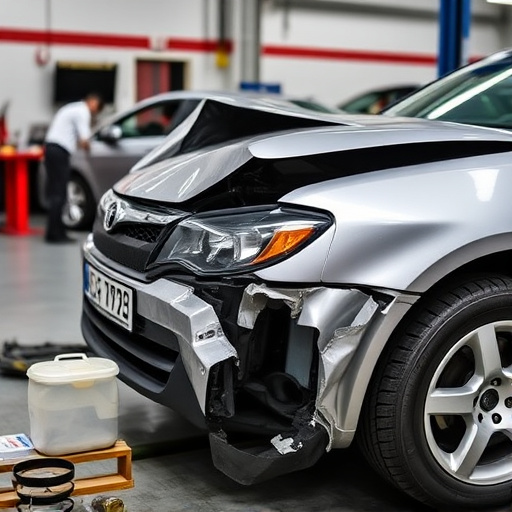
In the realm of Tesla aluminum body repair, advanced techniques have emerged to address the unique challenges posed by this innovative vehicle design. One such technique is paintless dent repair (PDR), which has revolutionized car restoration efforts. PDR allows for precise and seamless removal of dents and dings without damaging the original paintwork, preserving the vehicle’s sleek aesthetics. This method utilizes specialized tools and expertise to gently push out deformities, making it a preferred choice for both professional auto repair shops and DIY enthusiasts.
Additionally, advanced robotic welding systems have played a pivotal role in ensuring structural integrity while facilitating seamless assembly. These systems offer greater precision and control compared to manual methods, enabling the creation of perfect joints that mimic the original factory finish. The integration of these cutting-edge techniques has elevated Tesla aluminum body repair work, making it more accessible, efficient, and aesthetically superior, catering to the high standards expected by Tesla owners.
Tesla’s adoption of aluminum body construction has brought both advantages and unique challenges for repairs. Understanding the distinct properties of Tesla aluminum bodies is crucial for effective repair work, as it differs significantly from traditional steel bodies. Common issues like panel misalignment and corrosion require specialized techniques to address accurately. Advanced methods, such as precision cutting, welding, and seamless paneling, are now essential in achieving flawless Tesla aluminum body repairs, ensuring vehicle longevity and maintaining the brand’s iconic design integrity.

